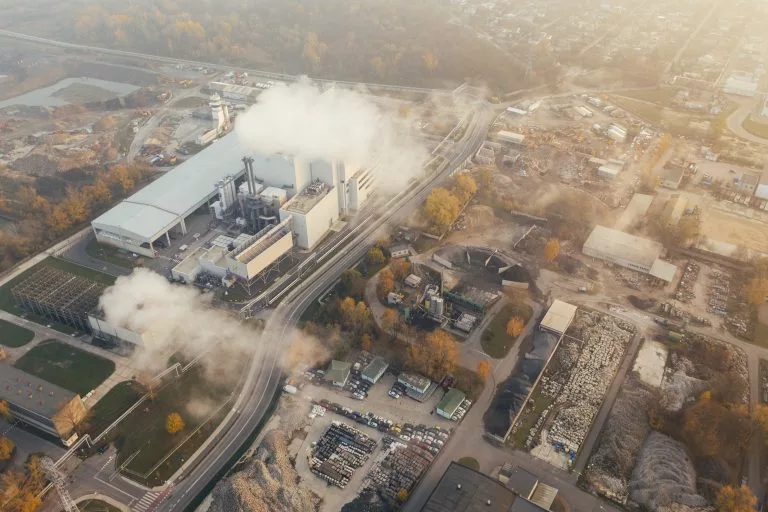
Particulate matter is in the air all around us. Emitted from sources like industrial plants, fossil fuel burning, power plants, and wildfires – they are everywhere and can have dire consequences for human heart health. Regulatory agencies like the Environmental Protection Agency (EPA) are in place to ensure that things like particulate matter are kept sufficiently in check to protect American citizens. But are they doing enough to curb particulate matter to truly keep Americans safe?
Two facts:
It stands to reason that if the EPA stood by its own avowed commitment to environmental justice, new science displaying the current environmental standards set by the EPA do not adequately protect “human health and the environment,” the EPA would then change those standards until they do. A new study conducted by the research division of Kaiser Permanente on the effects of particulate matter smaller than 2.5 micrometers in diameter (PM2.5) on cardiovascular disease and incident heart attacks has shown one such shortcoming in the EPA’s standards.
Air pollution’s direct, causal effect on increased heart attack rates and risk of cardiovascular disease has been proven time and time again, in numerous studies stretching back decades. The link itself is long beyond debate. New studies into this same field, like the one above from Kaiser Permanente, largely focus on specific details – details intended to provide a framework for legislative action.
At the very beginning of the Kaiser Permanente report, the study’s authors define its importance: “whether the current National Ambient Air Quality Standard…is sufficiently protective.” The current Ambient Air Quality Standard regulated by the EPA allows for a yearly average up to 12 micrograms of PM2.5 per cubic meter of air. This current standard was established in 2012, and even at the time stirred controversy as being too high to adequately protect Americans from the health risks of particulate matter pollution. Subsequent studies have continuously reinforced this inadequacy of the Ambient Air Quality Standard.
This newest study adds the layer of socioeconomic status to the long list of existing research. The wealth of the more than 3 million participants in the California study was determined both individually (by determining if participants received Medicaid insurance) and as part of a group in geographic regions (through both geocoding participants’ addresses and determining the high school districts in their neighborhoods).
What the study uncovered across its ten years of data is concerning, but not surprising. All 3 health concerns tested for by the study (heart attack events, death from coronary artery disease, and death from cardiovascular heart disease) all increased significantly at higher exposure to PM2.5. These increased risk rates occurred even at moderate concentrations of particulate matter: the study found a 6% increased risk of heart attack and a 7% increased risk of death from heart disease in adults exposed to air pollution at concentrations above 10.0 micrograms per cubic meter, well below the Ambient Air Quality Standard of 12 micrograms.
Noticeably, the tested particulate matter was also more highly concentrated in areas of lower socioeconomic status. With insights allowed by the geocoding that tied participants in the study to specific map coordinates, these poorer areas are often nearer to large contributors to air pollution: highways and other busy streets, as well as factories and manufacturing plants.
The evidence is clear: the current EPA regulatory standard for particulate matter is set at a threshold too high to be truly protective of the heart health of American citizens, with those in poorer communities facing an even greater risk. The EPA’s implementation of an Ambient Air Quality standard exists solely to protect Americans from the well-known risks of air pollutants, with cardiovascular diseases and heart attacks being one of the most widespread. At its current level of an annual average 12 micrograms per cubic meter, the standard does not do enough to protect Americans, and places the most vulnerable people in harm’s way. In fact, the Kaiser Permanente study found that the risk of cardiovascular consequences in adults increases with long term to exposure to any amount of PM2.5 above an annual average of 8 micrograms.
The EPA needs to prioritize the safety of Americans over the concerns of corporate lobbyists and the corporations behind them. Exxon Mobil, whose oil refineries have been noted as among the worst sources of particulate matter pollutants, has been among the most aggressive corporations in lobbying the EPA throughout the 2010s. They are far from the only example.
The EPA itself states that this primary Ambient Air Quality Standard for PM2.5 is intended to protect “the health of ‘sensitive’ populations such as asthmatics, children, and the elderly.” There is sufficient research to prove that at the current level, it fails to provide meaningful protection. It is time for a change. It is time for the federal organization intended to ensure the environment is safe and livable for American citizens to enact policy based on the science necessary to perform this single and singular task. Until then, Americans are at an increased risk of heart attack and heart disease directly caused by fine particulate matter air pollution.

"*" indicates required fields